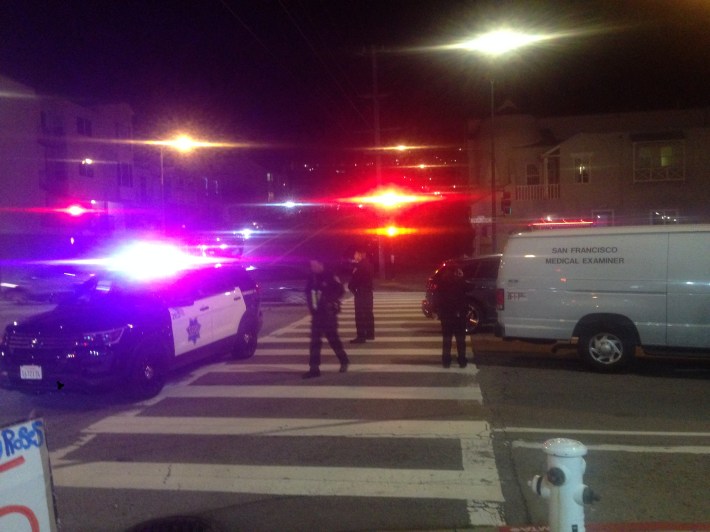Note: GJEL Accident Attorneys regularly sponsors coverage on Streetsblog San Francisco and Streetsblog California. Unless noted in the story, GJEL Accident Attorneys is not consulted for the content or editorial direction of the sponsored content.
Yin Ching Tam, 69, was crossing 19th Avenue at Quintara when she was struck and killed Saturday by a motorist driving a blue Toyota sedan. It was just two months ago that David Grinberg, 90, was killed on another notorious crossing, at the intersection of Baker and Fell.
"Seniors are five times more likely to be killed in traffic crashes in San Francisco, so it's not an accident that two seniors were recently killed on San Francisco streets. These crashes are predictable, which means they are preventable," said Cathy DeLuca, Walk San Francisco's Policy & Program Director. "We can make dangerous high-injury corridors like 19th, where Ms. Tam was killed, safer for everyone."
It is tempting to blame the timing of the traffic lights for these deaths. The signal at the intersection where Tam was killed gives a pedestrian only 31 seconds to cross the 80 feet; the countdown is too fast for senior citizens and the disabled. But that's only part of the problem.
Many elderly and mobility-impaired folks need a break after twenty or thirty feet.
That is where pedestrian refuge islands come in. These are small bolstered safe areas in the center of the street. They’re placed midway so folks crossing the street can pause, thus breaking the crossing down into two smaller segments. An excellent example of this can be found on Market Street at Dolores between Whole Foods and Safeway. And Oakland recently installed one at Harrison and 23rd, albeit out of paint and bollards, at another location where a senior was killed. There are other instances of this life-saving traffic engineering tool in San Francisco but not nearly enough. We need refuge islands at all crossings that are multi-lane.
Curb bulb-outs help by shortening the distance, too. To their credit, the SFMTA installed painted (read: much, much cheaper than doing it right using concrete) curb bulb-outs to shorten the crossing distance at the corner of Fell & Baker Streets after Grinberg’s death. But curb bulb-outs are not enough on multi-lane streets.

Tam’s death cannot be undone. But we can make minor changes to 19th Avenue (State Highway 1) that will help prevent others from being killed crossing this San Francisco Street. The State of California should spend a few dollars to install 30 pedestrian crossing refuge islands on 19th Avenue immediately. Considering the billions spent on computerized traffic signal systems, freeway widening, and highway ramps all over the state, this seems like a minor expense to keep seniors and the disabled safe.
And if you doubt that refuge islands really work, check out this article from Streetsblog New York (source of the lead photo). If properly designed, refuge islands don't just give people a place to rest, they physically prevent inattentive or impaired motorists from making dangerous, sweeping turns through the pedestrian space. They've shown their worth in Chicago and other cities as well.
Everyone becomes slower and less agile at some point in their lives. Shouldn’t we build a world that doesn’t require us to cross more than two lanes of traffic at a time in San Francisco? As Walk SF's Deluca put it, "We have the solutions to make sure seniors--and all people who walk in San Francisco--never lose their life simply crossing the street."





